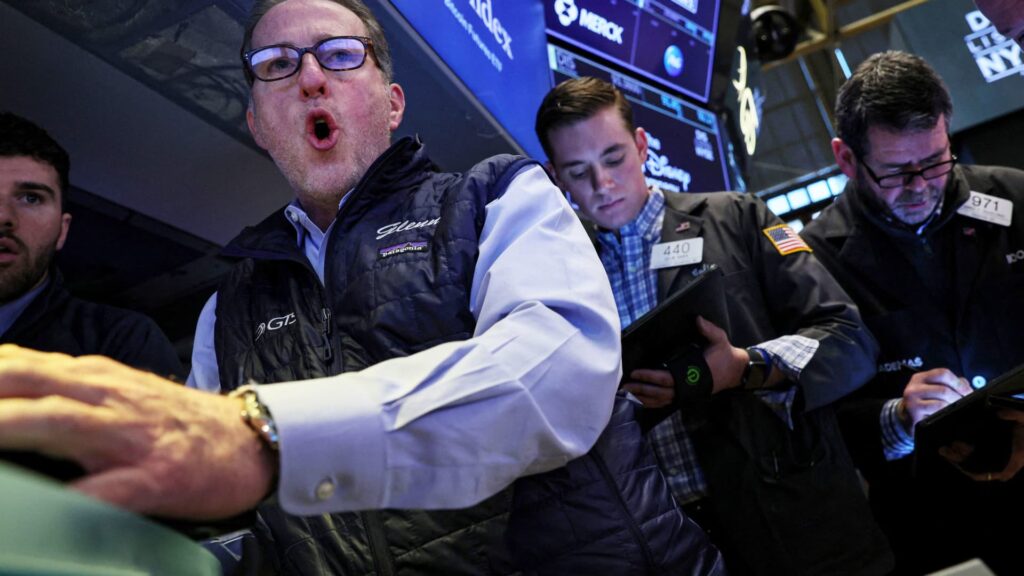
This month’s rout in smallcap stocks has erased the Russell 2000’s sparkling first quarter gain, and the benchmark index for smaller shares could face further trouble ahead so long as interest rates are left unchanged. The Russell slumped 2.9% this week and is down 5.7% in April. Smallcaps had climbed 4.8% in the first quarter in a hopeful sign that the stock market rally might be broadening to include underperformers. They’re now down 1.2% on the year, once again lagging far behind the S & P 500’s 7.4% rally. A hotter-than-expected March inflation report on Wednesday pushed investors on Wall Street to extend out expectations for the Federal Reserve’s first interest rate cut to September from June, according to the CME Group’s FedWatch tool . Some investment banks scaled back their estimates of the number of cuts this year to one from three. The darker rate outlook especially hurts smaller companies, many of whose promise of growing profits are pushed far off into the future. .RUT YTD mountain The Russell 2000 has climbed less than 1% in 2024. Now small caps face what could prove a turbulent time the rest of this year if the Fed doesn’t cut benchmark interest rates, according to Bank of America equity and quantitative strategist Jill Carey Hall. The biggest risk to smaller companies is the central bank’s benchmark fed funds rate staying at the current 5.25%-5.50%, she said. “Small caps have historically led in both the 6-12 months after the Fed is done hiking as well as following the first cut. However, cutting cycles usually occurred within a year of the last hike,” Hall wrote last week. The Fed’s last interest rate increase in the current cycle was in July, 2023. “While not a large enough sample set to draw conclusions from, we believe the longer the first rate cut gets pushed out vs our economists’ June forecast, the lower investors’ confidence that cuts will happen — ending the hiking cycle will not likely be enough,” she added. Servicing debt Hall specifies that the risk to smallcaps is tied to the effect of higher interest rates on refinancing needs. She estimates that more than 40% of small cap debt is either short-term or tied to a floating rate, which would result in a 32% hit to operating earnings over the next five years if rates were left unchanged. Even under Bank of America’s base of three cuts in 2024 and four in 2025, smallcap operating earnings still shrink by 24% over the next five years. Real estate will feel the brunt of the effect, Hall added, alongside technology. Materials, industrial and energy stocks are best positioned under this scenario, according to Hall. Better outlook if economy stays robust To be sure, the BofA forecast could lean too heavily toward a bearish outcome for small caps. Jefferies small cap strategist Steven DeSanctis says that the still robust economy is enough to support a more bullish outcome for the Russell 2000 in 2024, even if rate cuts don’t materialize. “The fact that the economy is stronger than anticipated, means that small cap earnings growth should be better than anticipated, because small caps are [tilted] more toward to the U.S. economy,” DeSanctis said. “Higher for longer [interest rates have] generally been good for small cap stocks. But clearly not how the market perceived that” during this week’s selloff. DeSanctis argues that balance sheets among small cap companies remain strong, which will help companies withstand turbulence if they need to refinance debt this year at a higher borrowing rate.






